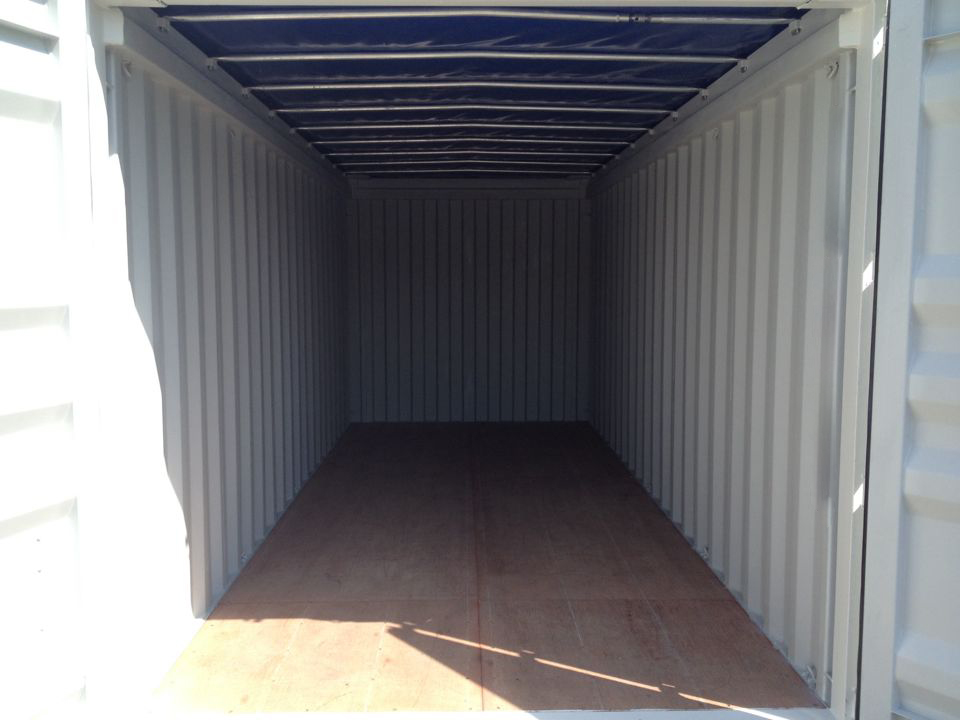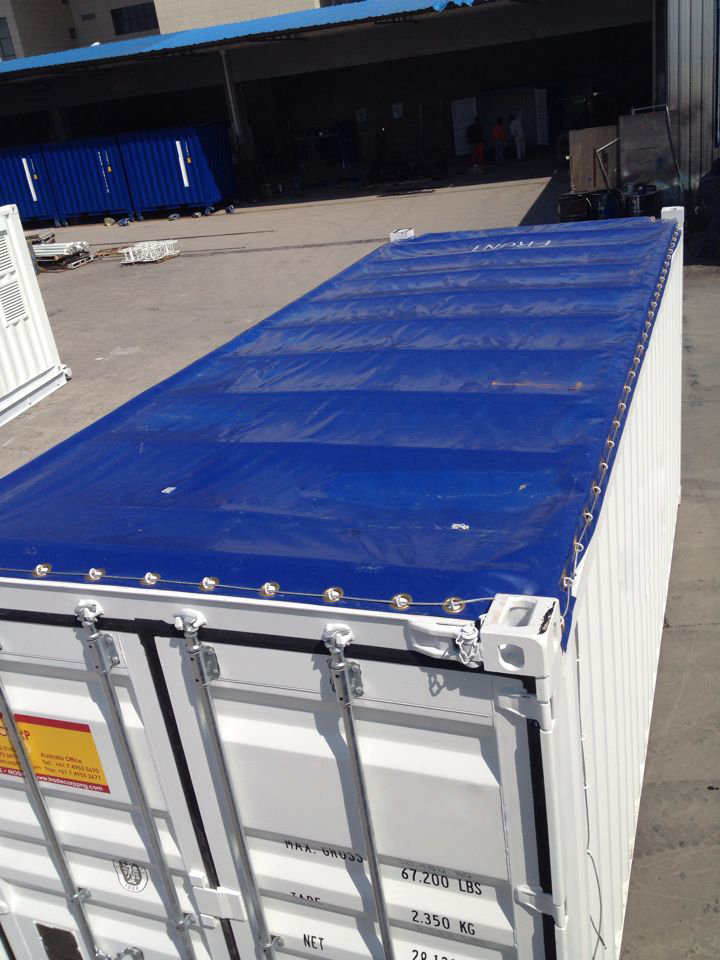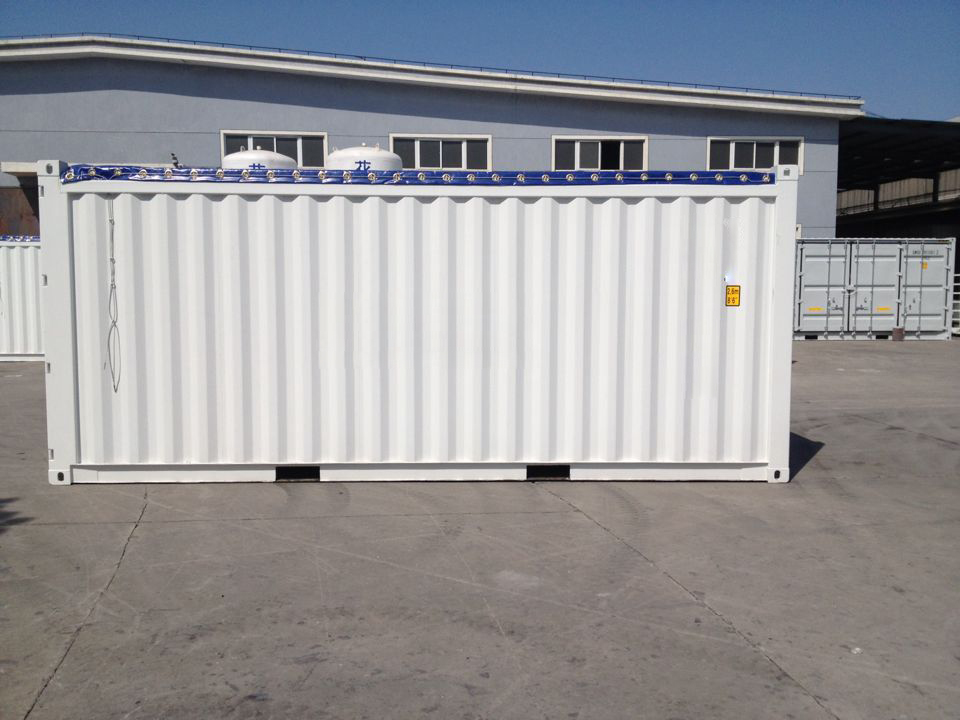What is an open-top container?
The open-top container is similar to a standard container but has an open top instead of a solid roof. The container has a convertible top made of tarpaulin sheet or steel, and it can be removed easily when needed.
The open roof makes loading and unloading items easier, especially for goods that are too tall to fit in standard container doors or that need to be lifted in and out of the container, such as heavy machinery, construction equipment, and industrial parts.
Open-top containers are available in various sizes, from 20 to 40ft. A 20-foot open-top unit is perfect for cargo that is too tall to fit in standard sea containers. You can easily store and transport bulk grain, machinery, and construction supplies.
On the other hand, a 40-foot open-top container is twice as long as a 20ft open-top container, offering larger cubic supplies, pipes of varying sizes, cable spools, and bulky machinery parts. They are made of Corten steel and are designed to be durable, stackable, and secure.
Exploring the Versatility of Open-Top Containers: Ideal Solutions for Oversized Cargo
Due to the open-top design, this container is ideal for transporting and storing oversized and bulky cargo that can’t be loaded through the door. However, an open-top container still has accessible standard container doors at one end, giving you complete flexibility. There are several features of this open-top container, such as corner castings, locking devices, and secure lashing points.
The corner castings help to secure containers when stacked together. The standard container doors are equipped with locking bars to ensure the security of the goods inside. Lastly, open-top containers have lashing points or rings, so they keep the cargo stable despite the height and weight of the commodities.
So, what are the differences between flat racks and open-top containers? Well, both containers are used to ship specialized cargo. The main difference between the two is that the flat rack only has walls on the short end of the container. In contrast, an open-top container does not have a roof. If your cargo needs to be put inside an open-top using heavy-lifting cranes or your business requires transporting heavy and oversized goods regularly, you should go for an open-top container.

What an open-top container can carry?
An open-top container can carry around 30,000kg (66.138 lbs) and is ideal for tricky cargo. One of the most significant advantages of this container is its capacity. The open-top design offers more flexibility, especially compared to a standard container. For many goods that can’t be loaded through the standard container doors, such as machinery, the open-top container comes to the rescue. In a case like that, an open-top container is a safe bet as it makes transportation more accessible and safer. Some of the goods you can transport using this container include:
- Industry machines
- Pipes
- Long steel bars
- Trees
- Construction materials
- Bulk coal
Other than that, they can also be used for temporary storage on construction sites, mining operations, or other industries where large equipment needs to be stored temporarily.

What are the pros and cons of using an open-top container?
An open-top shipping container can make storing and transporting oversized goods less hassle as you are not restricted to the normal confines of regular sea containers. Hence, one of the main pros of an open-top container is its flexibility in loading and unloading cargo. The open-top design allows for easy access to the cargo, which makes loading and unloading faster and more efficient.
Constructed of durable Corten steel, open-top containers protect your goods from wind, water, and external weathering. Once you load the cargo, you can secure the top of the container using a tarpaulin. Open-top shipping containers allow you to store items you wouldn’t usually be able to, increasing the number and range of items you can store and ship with your shipping container. However, the cons of using open-top containers include the possibility of weather damage to the cargo and the need for additional tarps and straps to secure the load.
In summary, open-top containers are versatile and convenient options for shipping oversized or tall cargo. When loading an open-top container, it is crucial to consider the weight and balance of the shipment and to use proper safety precautions. With appropriate care, open-top containers can be used safely and effectively for various shipping applications.
Where to buy or rent an open-top container?
Open-top containers are helpful for many different types of commodities. Moreover, they help you transport the cargo that most other containers can’t ship. If this unit is what you are looking for, Tradecorp can help you buy or rent open-top containers. Tradecorp is a supplier of shipping containers for sale and rent. With our extensive experience in the industry, we will help you get a shipping container according to your requirements. If our standard orders don’t match your needs, we also accept custom orders. Fill out the form on our page and expect one of our sales team to contact you soon.

